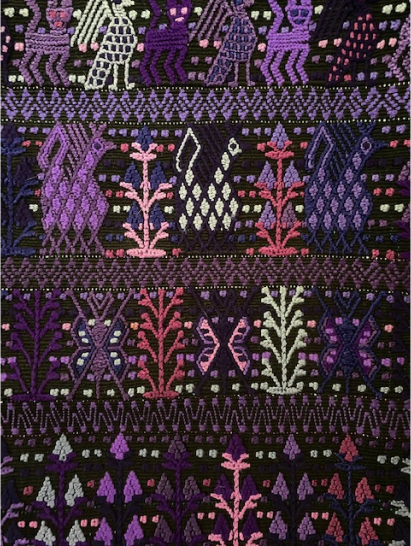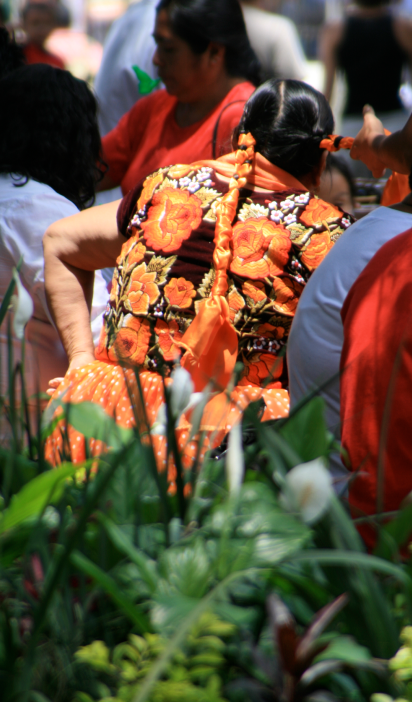Folk Project collective
Folk Project collective


Folk project is a small home décor brand based in California. We aim to preserve heirloom practices to ethically design poetic furniture, home décor pieces and capsule clothing collections meant to last.
We partner with multi-generational artisan groups in Guatemala and Mexico to design and create sustainable and meaningful accessories that celebrate heritage, craftsmanship and art.
Since 2005, it is Folk Project’s mission to create quality pieces with intention and care.
By weaving together stories of artistry, Folk Project creates meaningful design pieces to sustain beyond the trends. They are a tribute to hand loomed beauty and folk artistry.
Wishing that our poetic design will awake curiosity and happiness, Folk Project has been keen to promote Central American traditions and to celebrate its folk culture. We hope to continue this beautiful endeavor with artisans and its public.

Our story started from a trip to Central America where we fell in love with the culture, the people, their know-how and fine esthetic. Folk Projects invites you to explore the unique beauty of talented artisans we met in Central America along all our trips.
From the Mountains of Chiapas to the rain forest of Palenque, each town abhors its specific Huipil. It is not just about a technique; it is a meaningful expression of regional culture and identity. The one of a kind handcrafted piece tells the story of Mayan and Andes Folks.

Folk Project has created fair and healthy relationships with its partner artisans over the years. Prices are set by the artisans, as they are independent of us and have their own work structures ( cooperatives, family businesses, collectives etc...) and Folk Project is committed to paying the price they ask and always in full.
The Maya and the Huipil

Nowadays, Maya people inhabit the southeastern half of Mexico, Belize, Guatemala, and Northern Honduras. They speak 28 dialects. Just as language and social traditions distinguish one group from another, so do their garments and the designs that ornate them. The clothing that contemporary Maya people wear, as well as a variety of daily use or ceremonial textiles, are a material expression of a collective language. Indigenous cultural heritage is the legacy of tangible physical artifacts and intangible aspects of a group or society. Especially for women, clothing is the main medium, silent but eloquent, through which the local ethnic identity is transmitted from past generations to the present and bestowed for the benefit of future generations.
Mayan textiles stand out with their vivid colors in every shade dreamable and covered in geometric and floral patterns. These patterns are the visual codes of a symbolic system that communicates social and political information as well as spiritual beliefs. They speak on a variety of levels, and the ability to decipher their message depends on the degree of one's literacy, which is often linked to the person's extent of cultural initiation.
Some messages are meant only for the members of the immediate community and sometimes only for the weaver herself, whose textiles are an essential outlet for personal creativity.

The way the Huipil is made has also some significance. In some areas like Tecpan, the brown lines that are the back pattern of the ceremonial Huipil represent the furrows of the earth when planting crops. In other places, the center of the Huipil has special names. Like in Tecpan, or Comalapa the central part of the Huipil is called ”ruwa ruk’ux”, “on her heart”, and on her chest. That particular piece is a masterpiece with all the boldest figures as well as the most ancient. In Colotenango, the central part of the Huipil is named “the mother”.The center is also the place where the villagers meet for their ceremonies and processions. In the center is the Temple. And in the center, you can find the Ceiba, the sacred tree for the Maya. So again weaving as a sacred activity shows the various levels of significance it can have. Some are just aesthetic, some cosmological, some cultural. Some are part of the “costumbre”, meaning they might have significance, but the meaning has been lost but the pattern remains

As patterns evolve so do the colors. Maya women like any women on the planet follow fashion. Maya women are not preserved in a golden age of weaving or embroidery. Their tastes change the same way that art forms do in occidental societies, by encounters, inspirations, and events.
For example, in Zinacantan, Chiapas, the cross-stitched Huipiles used to be bright pink before the turn of the 21st century. It was believed that the new millennium could mark the end of times for the Maya people. When this did not occur, the color choice changed and became a peacock palette. The arrival of new technology like modern embroidery machines or more modern looms also has an impact on traditional fashion. Ultimately the patterns remain but the colors change over time. European colonization, and with it their fashion, made long-lasting changes in Maya garment traditions, especially among the male population. Men have always interacted more closely with the colonizing authority, as they were brought to seek employment in the new political and economic systems. In the new work environment, Indigenous clothing was discouraged or banned, and this cultural norm exists even today.
Some traditional styles of men's clothing remain only in isolated areas and mostly during rituals or local social practices for example, in Solola, San Juan Chamula, San Andres... In contrast, Maya women's attire remains more traditional. Many wear the traditional Huipil (blouse), the Corte ( the skirt), and a Faja ( a belt). In some communities, they also still wear traditional headdresses. Women are the main carriers and guardians of tradition, "la costumbre."
Some symbols meanings
While some patterns are purely esthetic or directly copied from a cross stitch pattern book, some particular patterns have special meanings in Maya culture. Symbols vary in form, shape and can have different meanings in different places.

The Tree of Life
The tree of life in San Juan Sacatepequez: "two people, one life". This symbol represents the life of man: birth, growth, reproduction, and death. But also the union of 2 people that become one in the form of a branched tree. The fruits that the tree bears are the children.

The Butterfly
In tactic principle, the Butterfly represents the freedom of creativity of the weaver before the weaving process begins. It also symbolizes freedom and free will in life in deciding which path we want to take.

The Serpent
The Serpent, in San Martin, Chimaltenango, the Serpent represents the protector of human beings. It serves as a guide on the path of life. The Serpent is also associated with weaving, the rain, and fertility. It is a well-diffused pattern in Mayan weavings.

The Chompipe
The Chompipe or turkey, in San Juan Sacatequepez represents the offering of the parents of the groom to his bride.

The Lion
In Nahuala, the Lion of wealth is a symbol of strength, power, and prosperity. He is also associated with good luck.

The Quetzal
It is the national bird of Guatemala. The quetzal is viewed as a symbol of goodness and light and can be seen in many traditional designs.

Flowers
Flowers represent fertility or new life.

